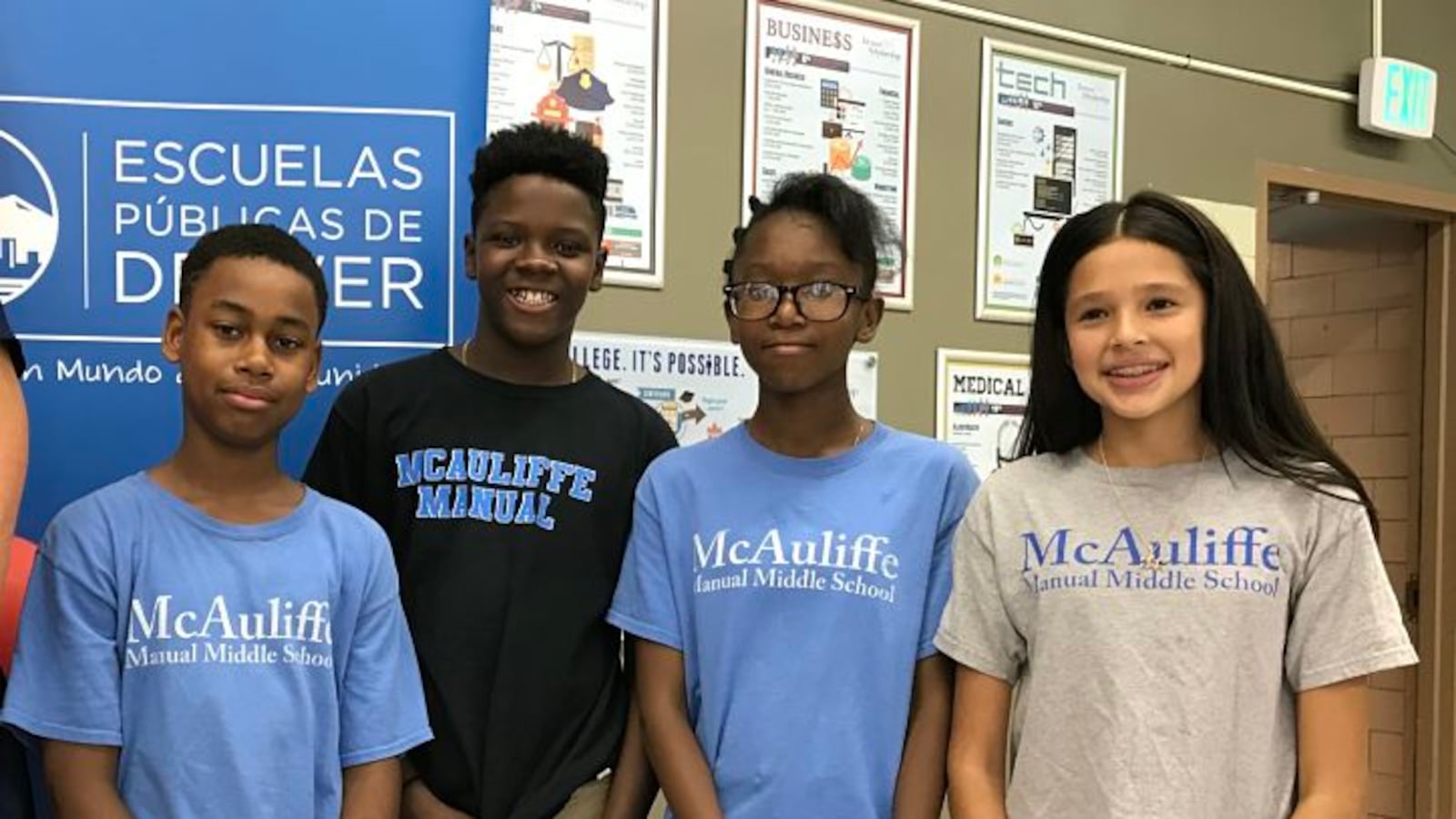Thirteen Denver schools have signaled their desire to become more autonomous by joining the district’s first “innovation zone” or by banding together to form their own zones. The schools span all grade levels, and most of the thirteen are high-performing.
Innovation zones are often described as a “third way” to govern public schools. The four schools in Denver’s first zone, created in 2016, have more autonomy than traditional district-run schools but less than charter schools, which are publicly funded but independently run.
Denver Public Schools recently released applications for schools to join the first zone, called the Luminary Learning Network, or to form new zones. The school district, which at 92,600 students is Colorado’s largest, is nationally known for nurturing a “portfolio” of different school types and for encouraging entrepreneurship among its school principals.
The district is offering two options to schools that want to form new zones. One option is for schools to apply to form a zone that would be overseen not by the district but by a nonprofit organization. That’s how the Luminary Learning Network is set up.
Another, slightly less autonomous option is for schools to apply to form a zone that would be overseen by the district. “Some additional autonomies would be available to these schools, but many decisions would still be made by the district,” the district’s website says.
One tangible difference between the two: The principals of schools in zones overseen by the district would answer to district administrators, while the principals of schools in zones overseen by nonprofit organizations would be hired and fired by the nonprofits’ boards of directors.
Schools in both types of zones would have more control over their budgets. A key flexibility enjoyed by the four schools in the Luminary Learning Network has been the ability to opt out of certain district services and use that money to buy things that meet their students’ specific needs, such as a full-time psychologist or another special education teacher. The zone schools would like even more financial freedom, though, and are re-negotiating with the district.
The district has extended the same budgetary flexibility to the schools in Denver’s three “innovation management organizations,” or IMOs, which are networks of schools with “innovation status.”
Innovation status was created by a 2008 state law. It allows district-run schools to do things like set their own calendars and choose their own curriculum by waiving certain state and district rules. The same law allows innovation schools to join together to form innovation zones.
The difference between an innovation zone and an innovation management organization is that schools in innovation zones have the opportunity for even greater autonomy, with zones governed by nonprofit organizations poised to have the most flexibility.
The deadline for schools to file “letters of intent” to apply to join an innovation zone or form a new one was Feb. 15. Leaders of the three innovation management organizations applied to form zones of their own.
One of them – a network comprised of McAuliffe International and McAuliffe Manual middle schools – has signaled its intent to join forces with an elementary school and a high school in northeast Denver to form a new, four-school zone.
Three elementary schools – Valdez, High Tech, and Swigert – submitted multiple intent letters.
Amy Gile, principal of High Tech, said in an email that her school submitted a letter of intent to join the Luminary Learning Network and a separate letter to be part of a new zone “so that we are able to explore all options available in the initial application process. We plan to make a decision about what best meets the needs of our community prior to the application deadline.”
The application deadline is in April. There are actually two: Innovation management organizations that want to become innovation zones must file applications by April 4, and schools that want to form new zones have until April 20 to turn in their applications.
Here’s a list of the schools that filed letters of intent.
Schools that want to join the Luminary Learning Network:
Dr. Martin Luther King, Jr. Early College High School
Valdez Elementary School
High Tech Elementary School
Schools that want to form new innovation zones overseen by nonprofits:
McAuliffe International School
McAuliffe Manual Middle School
Northfield High School
Swigert International School
These four schools want to form a zone called the Northeast Denver Innovation Zone.
McGlone Academy
John Amesse Elementary School
These two schools want to form a zone called the Montbello Children’s Network.
Grant Beacon Middle School
Kepner Beacon Middle School
These two schools want to form a zone called the Beacon Network Schools IMO I-Zone.
Schools that want to form a new innovation zone overseen by the district:
High Tech Elementary School
Isabella Bird Community School
Valdez Elementary School
Swigert International School
DCIS at Ford
These five schools want to form a zone called the Empower Zone.

